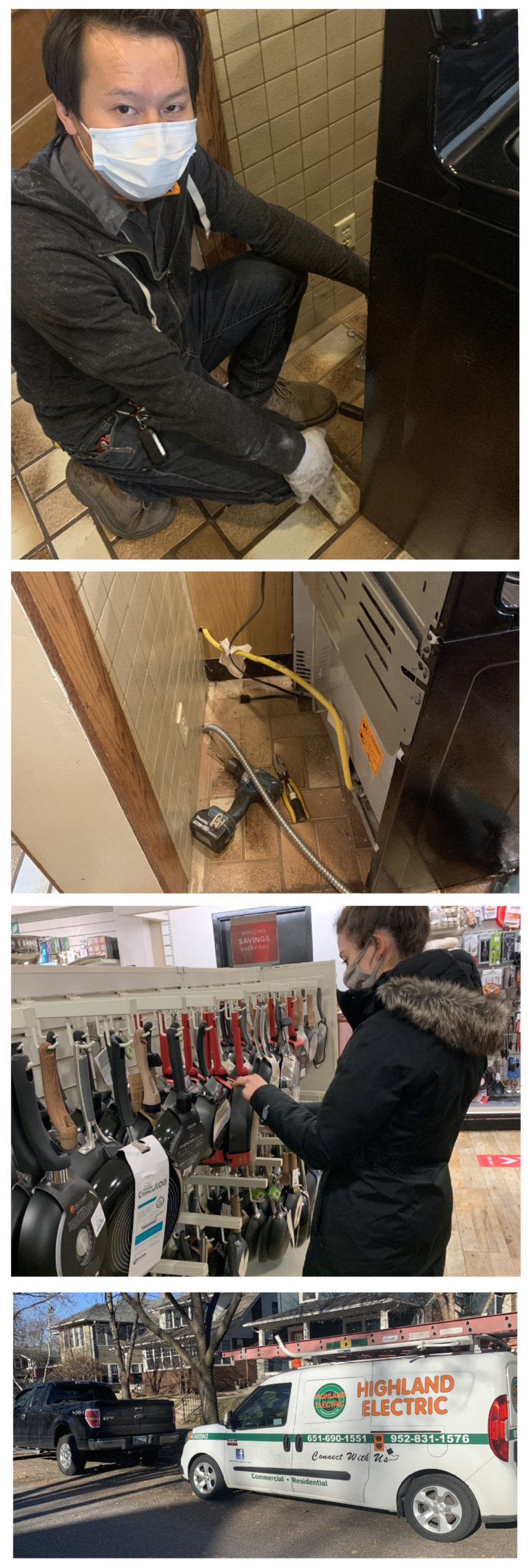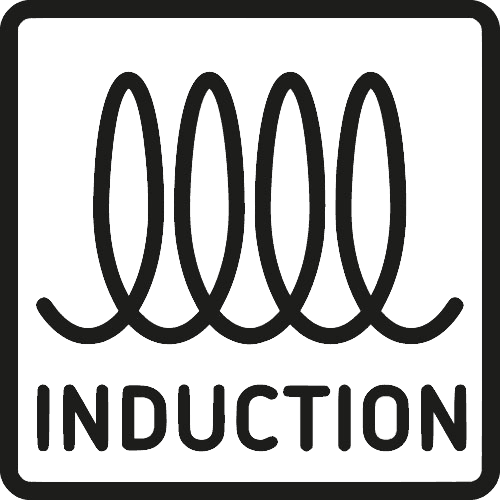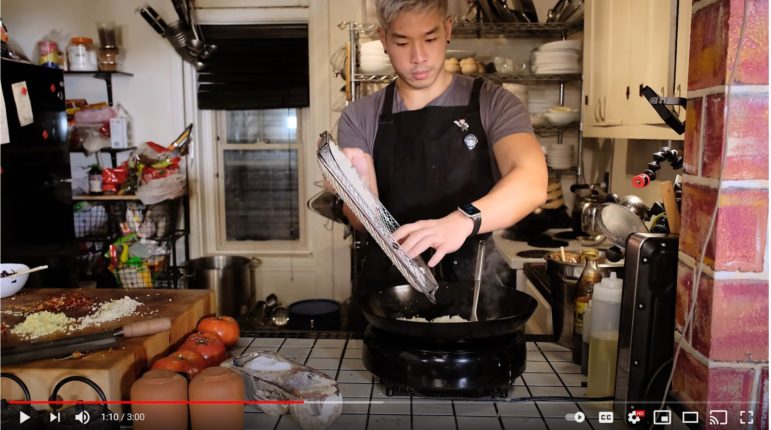

When Fresh Energy moved to remote work due to the pandemic, I became one of millions of Americans spending my days at home and cooking every meal on an old gas stove. Like 40% of homes in the Twin Cities, our kitchen does not have a range hood or outside vent. That meant every day, we burned fossil fuel inside without ventilation. And since my husband and two daughters and I were all home, we were breathing it in 24/7.
Cooking with fossil gas is so common, it’s easy to assume it’s safe. In fact, gas stoves release combustion pollutants—including nitrogen dioxide (NO2), sulfur dioxide (SO2), and polycyclic aromatic hydrocarbons (PAH)—into our kitchens every time we turn on a burner. Fresh Energy published a comprehensive brief on the topic in 2020, detailing state data including the fact that 43% of adults and 35% of children reporting gas cooking as an asthma trigger.
What I also know from working at Fresh Energy is that buildings contribute more than 40% of the nation’s carbon pollution, and that moving to clean electricity for cooking and heating are considered top strategies to reduce emissions.
Induction ranges are the new, efficient, high-performing way to cook with electricity. Fresh Energy sponsored a webinar on the topic, and a few colleagues had taken the plunge, so I had a lot of tools at my disposal when I made the decision to get the fossil gas out of my kitchen and switch to induction cooking. Here are four major-takeaways from my experience.
1. Don’t worry about the cooking part—induction stoves are amazing

The notion that “real cooks cook with gas” is sorely out of date. Induction burners are extremely responsive, heating up and cooling down lightning fast.
Instead of waiting for a gas flame or old electric coil to push heat through the pan, induction cooking heats the pan from within using a magnetic field. The speed takes a bit of getting used to—if you are frying an egg, have your butter ready before you turn on the burner. It’s almost supernatural how fast it can boil water and its ability to simmer is unmatched.
“They are all good, just buy the cheapest one!”
The oven part of the range also works well, ours even came with an air fry setting. There are many options and models out there, but I just used the sage advice of a technical expert colleague who said, “they are all good, just buy the cheapest one.” Be aware that induction cooking isn’t silent. There’s a low hum. It doesn’t bother me at all, but it’s there.
2. Plan ahead! You might need professional help (and some new pans)

If you are switching from gas to electric, you will likely need to update the electric service to your kitchen. Our hundred-year-old Saint Paul house had only a standard outlet and the new range required us to run a 40-50 amp, 240-volt circuit up to the kitchen. We saved a trip charge on the service by planning ahead and making the needed change in conjunction with another electric repair. If you already have a traditional electric stove, you should not need a service upgrade to replace it with an induction model.
Turning off and capping the gas service to your old stove might also require professional help. Our gas shutoff valve was inside a lower cupboard and was in poor condition, so we again combined our plumbing help with another project to cut down on cost.

Pans are the final pieces of the puzzle. The magic of induction cooking requires pans made of magnetized material. Stainless steel and cast-iron pans work but aluminum and copper won’t, unless they have a magnetized base. You can look for the induction-ready logo (left) on the underside of pots and pans or, if you’re curious about your own pans, here is a simple test: if a magnet sticks to the bottom of your pan, it will work on an induction burner. In all, the magnet only stuck to about half of our pans. My daughter and I brought a magnet to a local store and were pleasantly surprised by all the options. We found that even niche items—including a hand-crank stovetop popcorn popper—come in induction-compatible stainless steel.
3. Single burners are another option
If you are a renter, don’t need a new stove yet, or just want to get a taste of induction, single burner “hot plates” are a good choice. Many cost less than $100 and can simply sit on the counter and plug into a standard outlet. A lot of day-to-day cooking only involves a single burner and it’s a great way to enjoy the air quality benefits of avoiding fossil gas combustion in your kitchen. One Fresh Energy staffer’s husband has asthma so they almost exclusively use an induction hot plate for cooking.

Caterers and restauranteurs are on the vanguard of using induction hot plates—you can check out Chef Jon Kung in action in this video he made with Mothers Out Front. Among induction’s many benefits, Chef Kung notes that his induction burners allow him to cater venues without vents, where gas burners aren’t allowed.
4. We need to make this easier for everyone
My family is now enjoying the benefits of great functionality, improved indoor air quality, and a smaller carbon footprint—but only because I had the privilege, information, and incentive to kick fossil gas out of my kitchen. Everyone should have this opportunity. Under-resourced families are already burdened with poorer outdoor air quality and are more likely to live in smaller and older homes, which means more exposure to fossil gas from the kitchen. That needs to change.
Most Minnesota homes were designed around fossil fuel heating and appliances. Retrofits, as I learned, are doable, but complicated and can be expensive. Better information, state and utility incentives, and an end to gas subsidies will make it easier to transition fossil fuel-dependent homes to clean electricity—creating many new jobs in the process—and Fresh Energy is working hard to make it happen swiftly and equitably. A good starting point is to ask appliance providers for guidance. Some companies, like Best Buy, offer free consultations with their Home Expert Team.
New construction is where we really have an opportunity to do better, but Minnesota isn’t there yet. Most new homes are still built to be powered by fossil gas, despite what we know about public health and despite many city- and state-level commitments to reducing carbon emissions. Fresh Energy is working on policy solutions, advocating for better building energy codes, and leading education programs with architects and realtors to make healthy, super-efficient, all-electric buildings the new business as usual.
As a policy organization, Fresh Energy focuses on changing laws and systems toward an equitable carbon-neutral economy. But the big transition ahead of us will also require those of us who have the means to drive the market and plant the seeds for a healthier future powered by clean electricity. Personal action counts. For more how-to information on electric cars, lawn care, and cooking, visit Fresh Energy’s Go Electric! Guide.
